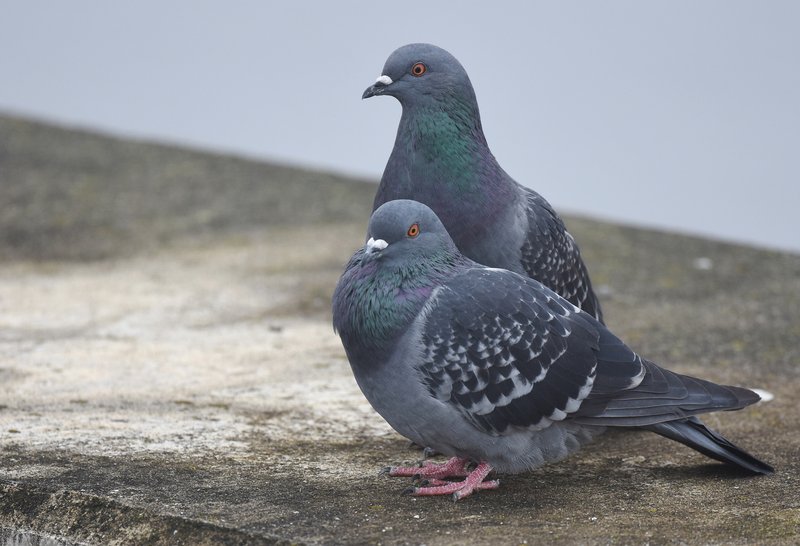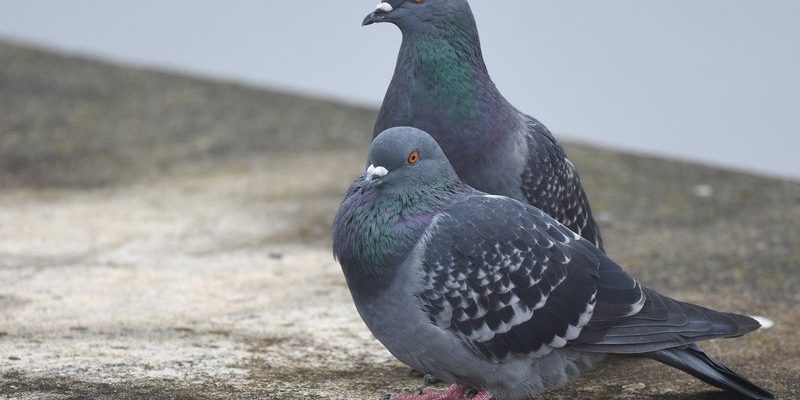
The rock pigeon, sometimes known as the rock dove, is one of the most widespread bird species on the planet. They’ve settled into a variety of habitats, making them a perfect example of nature’s resilience. Whether you’re wandering through a city park or exploring coastal cliffs, knowing where to find these birds can add a delightful element to your day. So, let’s dive deeper into their global habitats and ranges, and discover just how far they roam.
Urban Environments: The Rock Pigeon’s Playground
One of the primary spots to see rock pigeons is in urban areas. Think about it: cities provide a treasure trove of food sources, from leftover snacks in parks to bird feeders in backyards. These birds have a charming knack for adapting to human environments.
You might notice rock pigeons in bustling squares, along sidewalks, or even on rooftops. They’re often seen in flocks, inching closer to people, looking for an easy bite. Besides their adaptability, the pigeons have a fascinating social structure; they often form tight-knit groups, relying on each other for safety and feeding. If you’re in a city, keep an eye out for these feathered friends whenever you enjoy some time outside.
The Best Urban Spots to Find Rock Pigeons
If you’re eager to spot rock pigeons in urban settings, consider these hotspots:
- City parks and plazas
- Outdoor cafes and markets
- Rooftops and ledges of buildings
- Public transportation stations
Walking through these areas, you might catch sight of rock pigeons taking a break from their busy pecking to preen their feathers. Honestly, their carefree nature can be quite endearing.
Natural Habitats: Cliffs and Coastal Areas
Beyond urban life, rock pigeons have a deep-rooted connection to natural habitats, especially cliffs and rocky terrains. Their original home was in the coastal cliffs of Europe and Asia, where they nested in crevices, safe from predators. These environments give them a natural edge, allowing them to thrive in the wild.
You might be wondering how they find food in these more remote areas. Well, rock pigeons are not picky eaters! They forage for seeds, grains, and even small insects. If you take a hike along a coastal trail, keep your eyes peeled for these birds blending into the rocky landscape.
Where to Look for Rock Pigeons in Nature
If you’re keen on spotting rock pigeons in their natural habitat, consider these locations:
- Coastal cliffs and rocky shorelines
- Mountainous areas with steep terrain
- Abandoned buildings near natural settings
- Rural farmland with open fields
Exploring these areas might reward you with a glimpse of rock pigeons soaring against the backdrop of a blue sky. Their ability to adapt from wild environments to city life is a testament to their resilience.
Migration Patterns: Where Do They Go?
Rock pigeons are typically non-migratory, meaning they stay put in their chosen habitats year-round. However, some populations may move to find food or better nesting sites during harsh weather. During winter, you might notice a few migrating to slightly warmer areas, but for the most part, they’re pretty loyal to their territory.
This loyalty to their homes makes them fascinating subjects for birdwatchers. You can observe them year-round, as they are well-adapted to various climates. Whether it’s the chilly winter or the hot summer, rock pigeons have a remarkable ability to thrive.
Understanding Local Populations
To better appreciate where to spot rock pigeons, consider these factors:
- Local food availability: Certain areas may see a surge in pigeon populations during harvest seasons.
- Weather patterns: Brief migrations may occur in response to extreme weather.
- Urbanization: New developments can create fresh habitats for pigeons.
By understanding these local patterns, you can anticipate when and where to look for rock pigeons in your area.
Exploring Other Habitats: Parks and Gardens
Another great place to spot rock pigeons is in parks and gardens. These greenery spaces serve as an oasis for city dwellers and birds alike. Parks often provide ample food sources, such as seeds and bread crumbs tossed by visitors, making them a prime spot for feeding.
Moreover, parks with trees and benches provide perfect nesting sites for rock pigeons, allowing them to settle comfortably among the hustle and bustle of city life. You might see them playfully interacting with each other or taking a quick dip in a fountain—it’s quite the show!
Tips for Spotting Pigeons in Parks
If you’re venturing into a park to find rock pigeons, here are some tips:
- Visit during peak feeding times, like early morning or late afternoon.
- Bring a little birdseed or breadcrumbs to attract them.
- Find a quiet spot to sit and observe their behavior.
Watching rock pigeons in a park can be both relaxing and entertaining. They have unique personalities and often engage in playful interactions.
Conservation Status: Understanding Their Future
While rock pigeons are abundant, it’s essential to consider their conservation status. These birds are classified as “Least Concern,” meaning they are not currently at risk of extinction. Their ability to thrive in human-altered environments serves as a reminder of how adaptable they are.
That said, urban development and habitat destruction pose ongoing threats to their populations. Keeping city parks and green spaces available helps ensure rock pigeons—and many other birds—can continue to thrive.
How You Can Help
You can contribute to their conservation with simple actions:
- Support local parks and green initiatives.
- Provide appropriate food for them if you’re feeding.
- Spread awareness about the importance of urban wildlife habitats.
By being mindful of our surroundings, we can help ensure that rock pigeons continue to grace our cities and natural landscapes for years to come.
The rock pigeon is more than just a common sight in our cities; it’s a symbol of nature’s incredible adaptability. From urban parks to coastal cliffs, these birds have carved out spaces for themselves in a variety of habitats. So, the next time you spot a rock pigeon, take a moment to appreciate their journey and resilience.
Whether you’re keeping an eye out in bustling streets or serene nature trails, rock pigeons are right around the corner, inviting you to enjoy the varied tapestry of wildlife we share our world with. Happy birdwatching!

